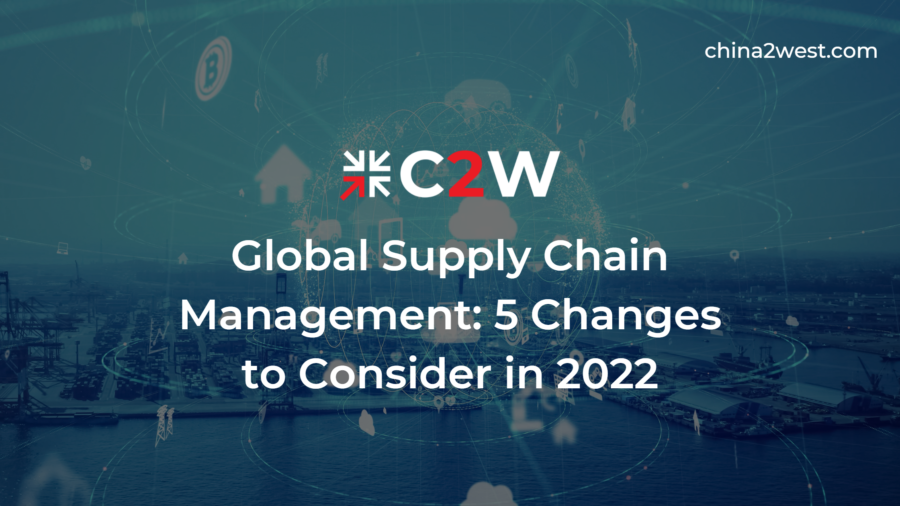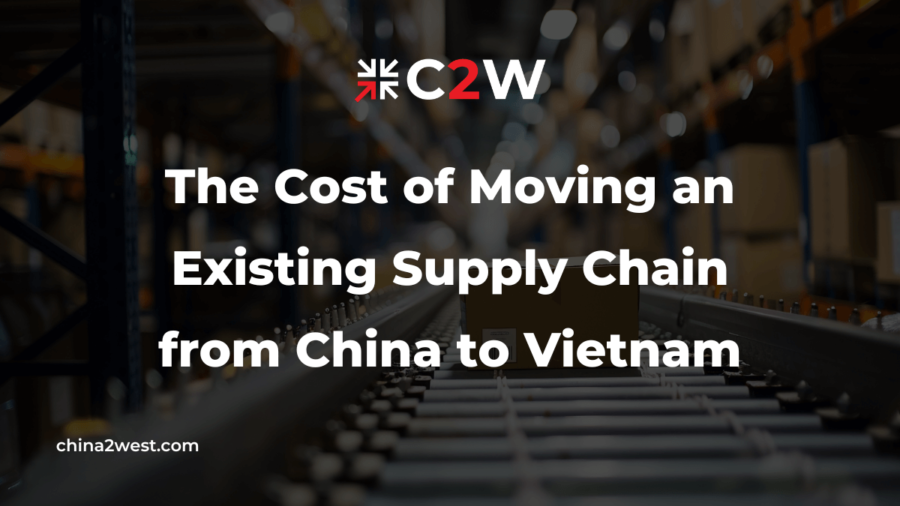Recent data shows that the global supply chain is set to have a compound annual growth rate of 11.2% from 2020 to 2027. This translates to a $21.56 billion jump, from $15.85 in late 2019 to $37.41 billion in 2027.
That said, the global supply chain is still reeling back from the devastating effects of the COVID- 19 pandemic. Despite a massive drop in COVID-19 cases and the lifting of movement restrictions, individuals in global supply chain management are still feeling its shockwaves. Aside from the pandemic, a lot has happened to completely transform the GSC landscape.
In today’s post, we’ll be highlighting a few factors you need to consider for your global chain supply management in 2022.
What Is Supply Chain Management?
Supply chain management describes the oversight of the flow of goods from the manufacturer to the consumer. It aims to maximize customer value and provide a competitive advantage for businesses against their rivals.
The supply chain manager’s responsibility is to ensure maximum efficiency in the flow of goods throughout the entire supply chain. They must also supervise key supply chain operations like:
- Sourcing
- Product development
- Production
- Supply chain logistics
In some firms, the supply chain manager must also ensure the integrity of the firm’s supply chain management system. Most small companies are incapable of effectively handling their supply chains. That’s why smart business owners outsource their supply chain management to reputable supply chain management companies.
1. The Shipping Costs
For the past few years, shipping costs have been astronomically high. If you expected a bit of relief in that regard, we have bad news for you. Events like the Russia-Ukraine crisis and the end of the Beijing Olympics mean extra pressure on the supply chain. The result is skyrocketing shipping prices that aren’t coming down any time soon.
It’s no secret, sea freight prices, especially to the US, will knock your socks off. This could have a major knock-on effect on supply chain logistics, like shortening credit terms. An excellent way to sidestep the high shipping rates is to diversify your trading lanes.
2. Economic Markets
Goods-related inflation has been evident for a couple of years now. Heading into 2022, we should expect more of the same. In fact, the US Producer Price Index is steadily approaching 10% in early 2022.
Larger service companies have granted employees to cushion them from the recent inflation. However, this well-intentioned move is likely to trigger a wage-price spiral that could worsen the situation.
In response, central banks in most developed countries, including the US, have raised borrowing rates. This will likely exacerbate the situation, given the lagging effects that monetary interventions have.
Expect to see excess supply from large companies dependent on considerable multi-year investments. This will slow demand and ultimately result in economic contraction. Companies in the GSC sector must brace themselves for this downturn and act accordingly.
3. Geopolitical Risks
Unless you’ve been living under a rock or something, you’ve probably heard of the Russia-Ukraine conflict. We all know that war is never good for business unless you’re in the arms business. The recent escalation in the Russia-Ukraine conflict has spelled bad news for GSC activities.
However, these geopolitical and trade risks aren’t exclusive to Russia and Ukraine. Iran is also facing an unprecedented crisis with a shaky regime. Not to mention the existential after-effects of Brexit in February 2020.
It’s worth noting that the effects of the Russia-Ukraine conflict affect more than just shipping routes. Last year, traders turned to rail routes to sidestep stringent COVID 19 restrictions. These routes traversed China through Russia, Ukraine, and Belarus.
With the risk of containerized rail freight at its highest. Land freight is also a no-go zone for traders and manufacturers. This has left many in limbo as to what route to use for their shipments.
The result of all these is disjointed labor markets, unfavorable markets, and anemic trade growth. Aside from the Ukraine-Russia situation, another crucial geopolitical issue is Beijing’s moves. As China inches closer across the Taiwan Strait, its move will have key implications on specific markets.
Beijing’s move may result in impacts on key minerals essential for the manufacture of tech and electric vehicles. This will put pressure on those specific industries and have a ripple effect on the global supply chain.
4. Global Health and COVID
With the lifting of moving restrictions and trade bans, it’s safe to say that we’ve put the pandemic behind us. However, this might not be the actual case.
The coronavirus has tons of potentialities and no one can really tell what direction the virus will take. The first possibility is that it could end up being endemic. This means that the virus will become normal, just like the flu or common cold.
Another possibility is that the virus will mutate and reinfect those it has previously infected. The good news is that these mutated forms of the virus will only cause mild symptoms in anyone they infect. As such, it’s likely that from the health frontier, things will get back to normal.
5. Production Delays
The geopolitical landscape has engendered a scarcity of key manufacturing commodities. Don’t be surprised to spot a few empty store shelves the next time you go shopping. Production delays have been the norm since late 2021.
Usually, vendors would buffer inconsistent supply with excessive stock. This strategy worked, but not for 2022. Nowadays, vendors and manufacturers are further away from the risk factor in their production and distribution cycles.
As such, supply chains have become more cost-effective and are characterized by a lot more caution by all key players.
Stay Ahead of the Global Supply Chain Management With the Above Tips
2022 could be a great or terrible year for your global supply chain activities, depending on how you use the information above. We’re facing unpredictable times, but things are bound to get better. Meanwhile, it’s up to you to do your best to stay ahead of the pack.
Contact us today for professional and expedient global supply chain management services.




